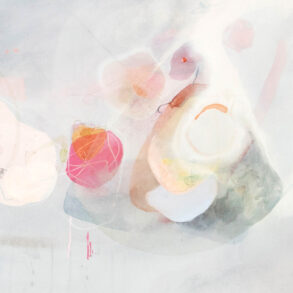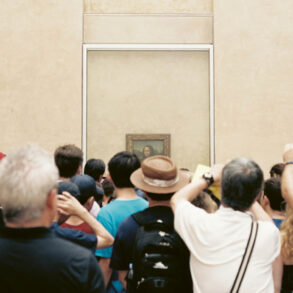Anthroposophy can help us to re-invite diversity and shape societies without division.
It’s the day after the election, and I am at my local coffee shop attempting to distill the complexity of the US election results and another Trump presidency into this article. My laptop has a sticker displayed on the back touting a liberal sentiment about “smashing the patriarchy.” A man sits down to join me at the table, and I feel my heartbeat quicken. I wonder if he will be “triggered” and become aggressive, assuming I am a “radical leftist” because of the sticker.
For many of us in the US, this layer of fear is pervasive. It follows us into each encounter with people whose political affiliations we do not know. The emotional realm rules these interactions and informs our opinions, turning our thinking into judgment and inflexibility and hardening our hearts.
In writing this, I must tell you that there is no way to simplify what is happening in the United States and across the world. There are so many forces at work, both spiritual and material, all with layers of impact on individuals and the Earth. Many of us wonder what is happening that we cannot perceive. What is going on “behind the scenes?” Which powerful people are involved? Which spiritual beings are involved? What is at stake? People say the pendulum is simply swinging from one side to another and will eventually come back to center, but many people suspect that someone has their fingers at the top of the pendulum, controlling its direction, holding it in place.
Throughout the country, people have formed strong opinions, often on topics they have no direct experience with, including immigration, the economy, and women’s rights. These personal perspectives, rooted in the emotional realm, take hold in our feeling life until, eventually, no other “truth” is allowed in. In addition, the contrast between these “truths” is extreme. Each side sees the other as eroding goodness and human values. These dichotomies are echoed in the world: Democrats and Republicans, men and women, Palestinians and Israelis. At the same time, many are struggling to forge a third path, a middle way. But its emergence is uncomfortable, and we easily go back to our polarized corners, comforting ourselves in familiarity.
The young people I work with tell me that the “truth” is difficult to discern. They receive personal messages on social media and direct texts to their phones from people who claim to know them and to be interested in who they are, only to discover these people are often not real, but simply schemes for money or exploitation. On the macro level, we hear about “deepfakes” and “fake news.”
In the United States, and I suspect in most places where these tensions exist, truth is a tricky topic. What I see as truth may not be what you see as truth. We want to simplify the complexity of the issues in the US, but without the richness of varying perspectives and varying truths, nothing can be solved. Luckily, anthroposophy invites us to view social issues from 12 different perspectives. Rudolf Steiner writes in How To Know Higher Worlds1—a book I feel is a handbook for peace—“To believe in and love humanity is the basis of all striving for the truth. Our striving must be built upon trust and love for humanity—although it does not begin there. Rather, it must flow out of the soul’s own forces. And this love for humanity must gradually expand into love for all beings, and indeed for all existence.”
Can we use our higher faculties, our love, to move beyond our subjective truths or at least gather and honor them all?
Anthroposophy was born out of ashes, out of catastrophe, out of a deep division of opinions about what is true and good. Waldorf education arose out of war. Biodynamic farming arose from the use of harmful pesticides and chemicals. Anthroposophical medicine and curative education arose out of failing materialistic conceptions of health and healing.
Because of our origins, I believe we are a peace movement, a movement toward wholeness and away from destruction. As such, we must ask ourselves, how do we move forward together? How do we find the essential truths of love and compassion, open-mindedness, and a will to create good? Can disbelief turn to acceptance? Can victorious sentiments turn to deeper discussion? Where are the places we can encounter each other and talk? As we prepare for another four years of Donald Trump as our president, we must prepare to understand the multiplicity of truths that exist within each person, each political party, and our society as a whole.
The man across the table at the coffee shop has started a conversation with me. Politics do not come into the conversation, and I wonder if he voted. So many Americans did not. He’s pointed out a different sticker on my computer, a small picture of the state of Pennsylvania, where I grew up and one of the critical “swing states” in this election. He asks about the weather in Pennsylvania and mentions he’s just moved to Northern California from San Diego. He smiles, saying sometimes the weather was too nice there, too sunny and perfect. Too one-sided, I think.
Image Ella Lapointe, Election, 2024









